How to pick the best phaser pedal?
Before you purchase a phaser pedal, it’s essential to know what type you’re looking for. There are simple ones here with just speed control and others that offer a lot more versatility. There are also plenty of other features that will form your buying decision, such as sound quality. In this section, we will go through all of these features, and as we do, it’s a good idea to take some notes of how important each one is to you. When you do this, you’ll get a clearer picture of exactly what you should be looking for.
Quality of sound
With a pedal, the sound is always going to be the primary concern. This should be the first thing that you look for, which is why you should get a trustworthy and dependable model. All the models that we’ve looked at here are able to demonstrate a high level of sound quality with subtle differences between them.
Each model is going to have a light difference on how it alters the sound. In terms of sound quality, true bypass and analog tones are often seen as the best ways to get a great sound. This is exactly what you can get with our Editor’s Choice model, the MXR M101 Phase 90 Phaser Pedal.
Whichever phaser pedal you get, make sure that you have read some reviews as some cheaper models don’t have the effects that you’re looking for.
Analog vs. digital
One of the biggest decisions that you have to make is whether to go for an analog or digital model. The analog signal is uninterrupted, and traditionally this has been seen as a better option as it has been able to produce a clearer sound. Many guitarists will swear by analog pedals for their entire pedalboard.
Digital pedals, however, have improved a lot over the years, and often now you can’t tell if a pedal is digital or not. This has brought their other qualities into play. Often with digital pedals, you can get a higher level of functionality. For some guitarists, this has made digital phaser pedals a better option than their analog rivals. If you are looking for a digital model, it’s hard to look past the TC Electronic Helix Phaser Pedal.
Controls and effects
There are numerous controls and effects that you can have. Here, we are going to look at the most common of them.
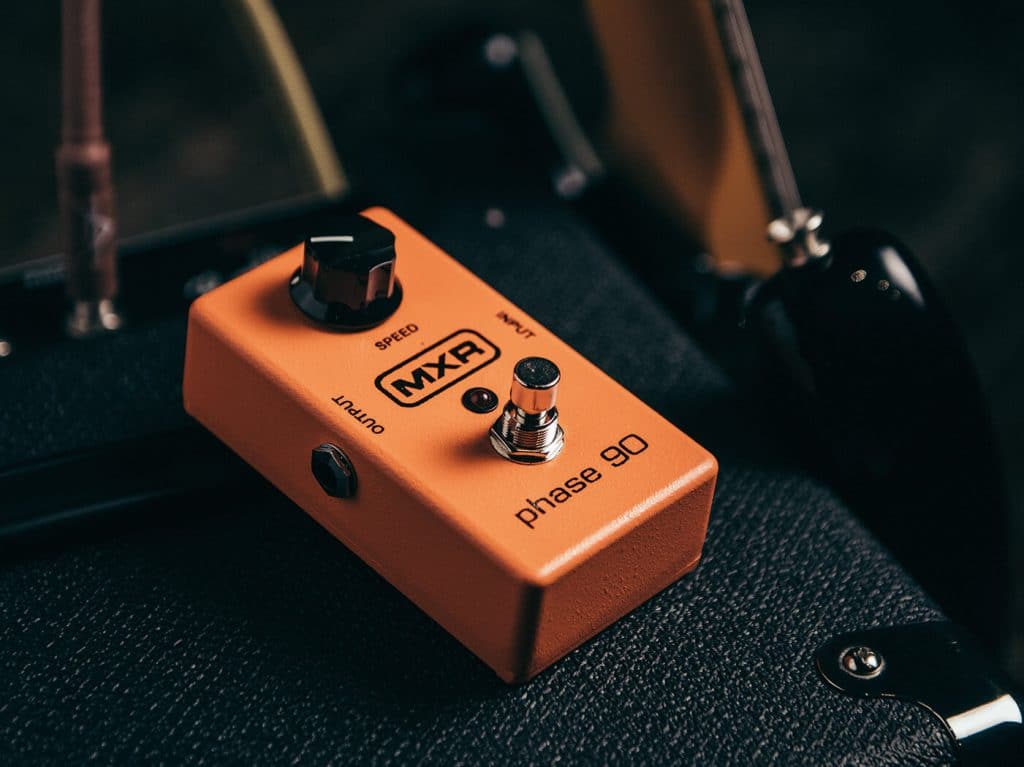 Rate/Speed – For some, this is the only control they need, and the only one you’ll find on every model. It makes the sweep faster or slower and is by far the most important control.
Rate/Speed – For some, this is the only control they need, and the only one you’ll find on every model. It makes the sweep faster or slower and is by far the most important control.
Depth – This knob will give the sweep more or less intensity.
Resonance – Works by adding or cutting off lower frequencies to emphasize the tone.
Modes/Stages – When you have this on a phaser pedal, it can imitate the effects of different phasers pedals of the past.
Level/Mix/Wet-Dry –This is the amount of the wet pedal effect applied vs. the dry input signal.
Feedback – This controls the amount of output signal being sent back into the input.
Bypass
True bypass is often seen as important to guitar pedals as it ensures the sound is as clear as possible. It works perfectly in a short signal chain, which is what most guitarists will be playing with. The problem with true bypass can be found when you’re using a longer chain and/or a long cable.
There are times when the tone of a true bypass can be drained, which is why you will need a buffered pedal to restore the signal strength before it gets to the amp. However, this can affect the sound quality, which is why it isn’t preferred in a short chain.
All the pedals we’ve looked at here offer true bypass with the exception of the BOSS PH-3 Phase Shifter, which is a brilliant pedal with buffered bypass.
Power supply
Before you buy a pedal, it’s a good idea to check the power supply to make sure that it’s suitable for your needs. If you have all your pedals work with 9V batteries to make your pedalboard as independent as possible, then it would make sense to get a pedal that works with the battery as well.
Some run on a 9V battery, others require an adapter, but the majority of pedals, including the Chase Bliss Audio Wombtone MKII, are able to work with them both to give you more flexibility.
Size and weight
For most guitarists, size and weight are not going to be an issue, but for those traveling with a full pedalboard, all those pedals can soon add up. Some of the pedals that we have looked at here are very compact and don’t require much space on your board, such as the Mooer Ninety Orange Mini Phaser.
You need to balance up your needs as larger pedals can be easier to use, and often, they will have more versatility. The best size and weight for you are going to depend on your needs solely. You want to asses these needs before you choose a phaser pedal.
Connectivity
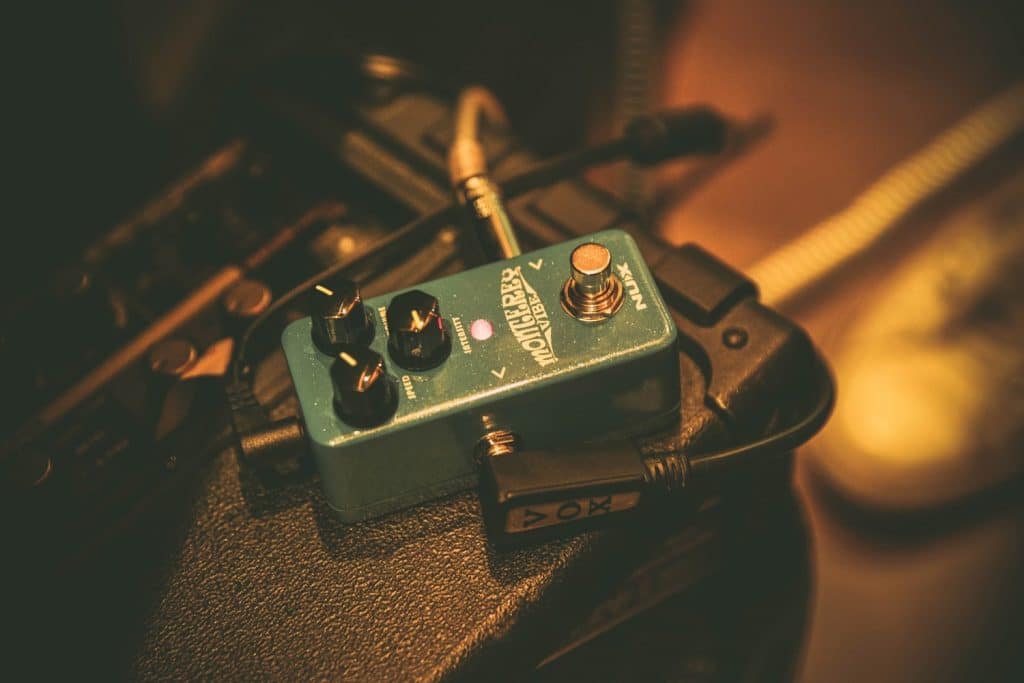 All of these pedals have an input and output that you obviously need, but other pedals are going to be able to offer you a little bit more functionality.
All of these pedals have an input and output that you obviously need, but other pedals are going to be able to offer you a little bit more functionality.
The likes of the TC Electronic Helix Phaser Pedal will offer you a stereo input and output, along with the regular input and output. This enables you to split two different signals, but it will also enable you to connect to two amps.
Another added level of functionality, as seen with the BOSS PH-3 Phase Shifter, is having an input for an expression pedal if you wanted to be able to have more control over your effects. If you don’t have a need for these extra inputs and outputs, then you can just get a simpler phaser pedal.
Versatility
As we’ve seen here, there can be a big difference between some of these pedals. You shouldn’t just get a phaser pedal with loads of controls just for the sake of it.
Some guitarists like to keep their phaser pedal simple as you just want the speed setting, or perhaps you have other pedals on your board.
For those that like to experiment with their phasing sound, there are going to be options out there for you. The Chase Bliss Audio Wombtone MKII is a great example as it has a lot of capability to get the exact phasing sound that you want. For simplicity, a model like the Electro Harmonix Small Stone Nano EH4800 Phase Shifter would be perfect.
Prices
It’s important to find a phaser pedal that is in your price range, and we have a few different options available here.
If you don’t mind paying the premium price for a high-quality pedal, then the Chase Bliss Audio Wombtone MKII, with its vast range of functionality, is available at around $350. With this, you are getting nine controls, two switches, and an expression/CV input jack and a TAP/MIDI output jack.
In the mid-range level, the TC Electronic Helix Phaser Pedal and the BOSS PH-3 Phase Shifter at around $130 are great options. They have great sound quality while giving you plenty of functionality.
At the budget range, the JOYO JF-06 Vintage Phase Guitar Pedal at around $35 is going to be a lot more affordable, while still producing excellent sound and having high build quality.






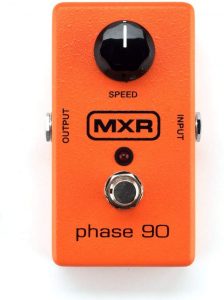
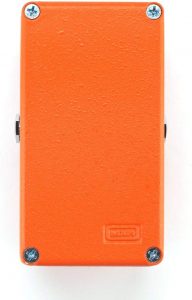
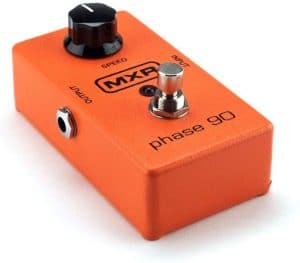
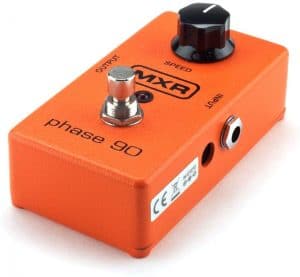
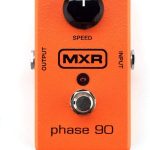
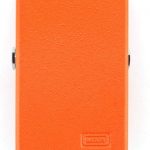
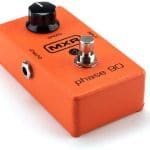
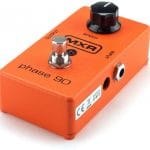
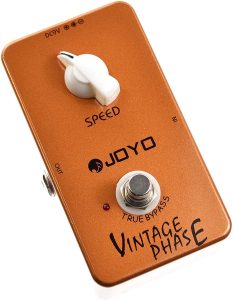
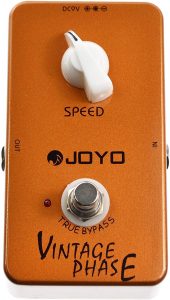
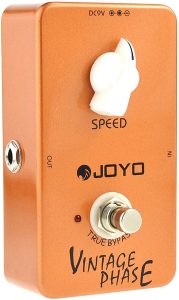

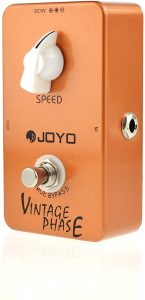
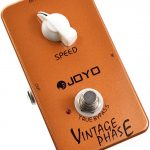
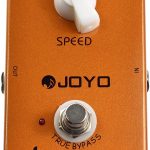
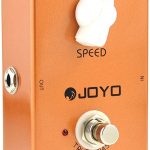
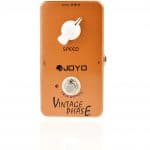
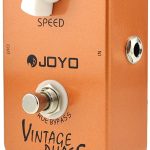
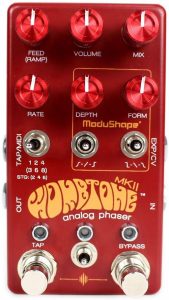
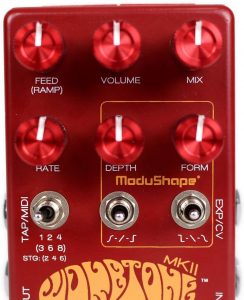

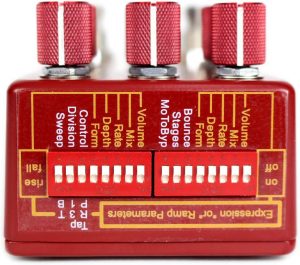
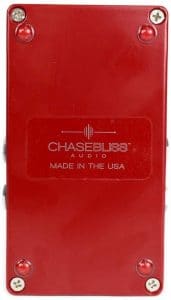
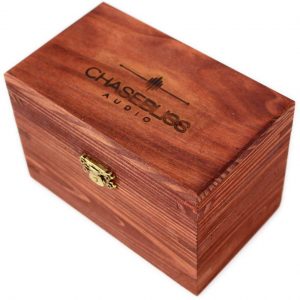
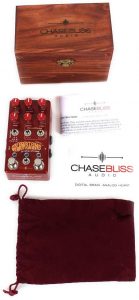
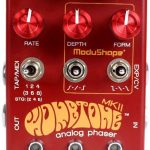
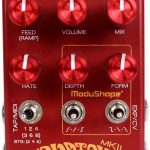
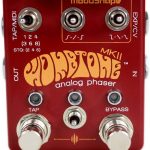
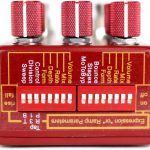
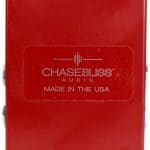
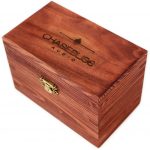
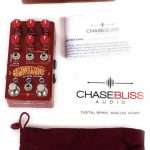

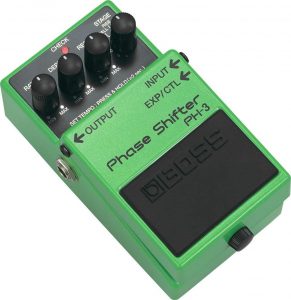
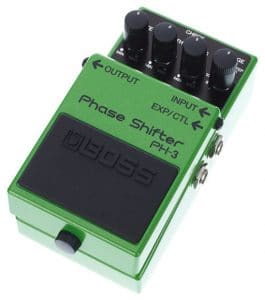
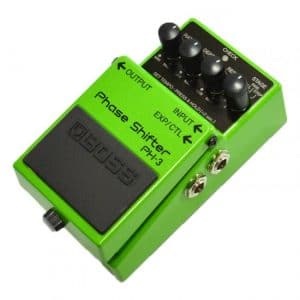
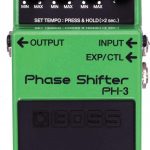
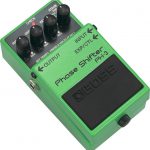
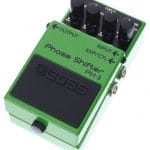
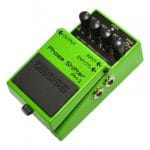
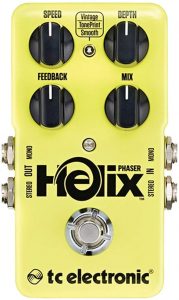
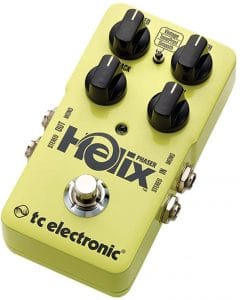
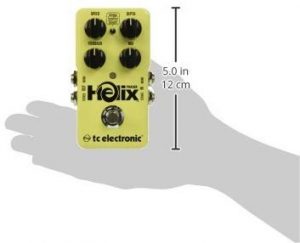
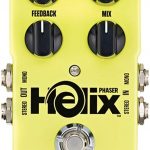
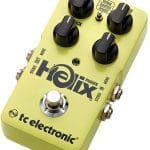
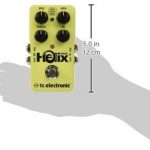
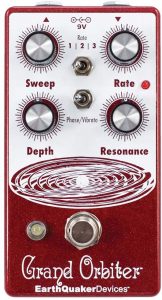
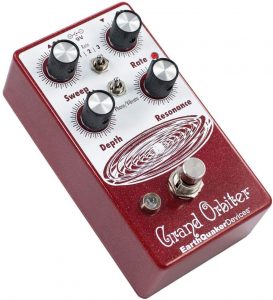
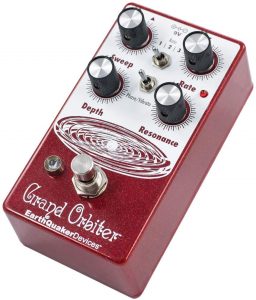
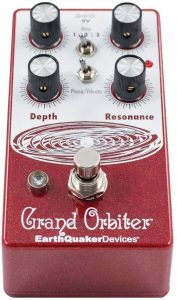
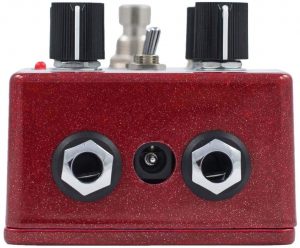
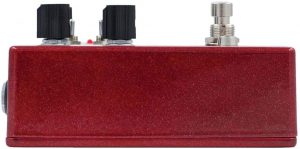
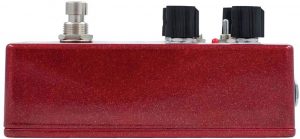
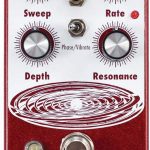
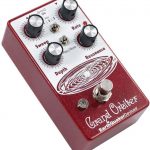
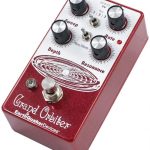
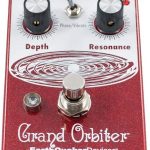
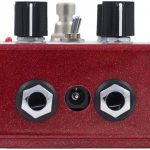
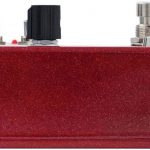
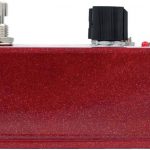
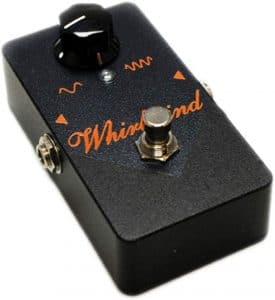
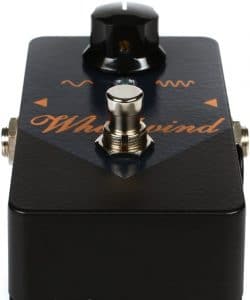
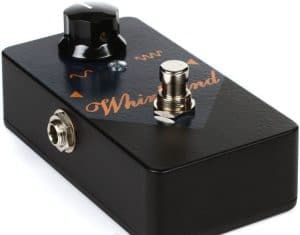
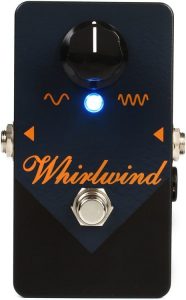
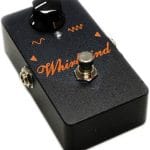
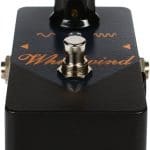
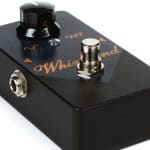
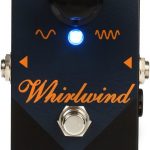
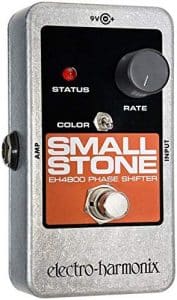
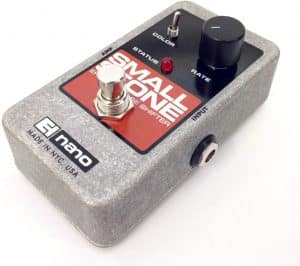
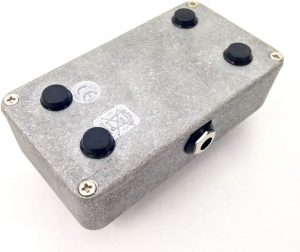

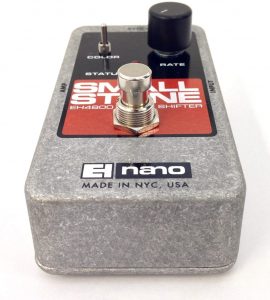
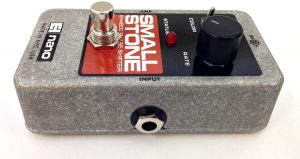
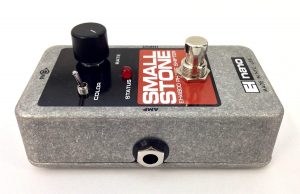
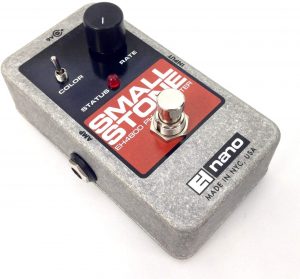
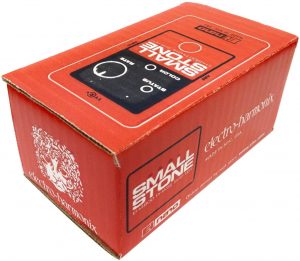
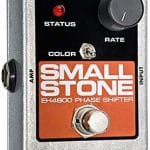
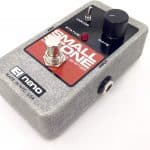
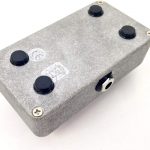
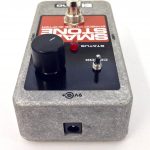
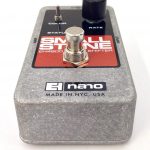
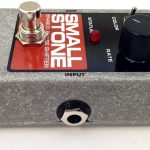
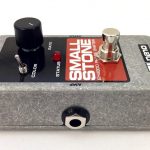

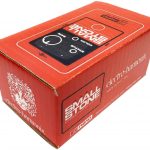
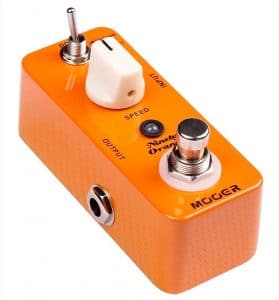
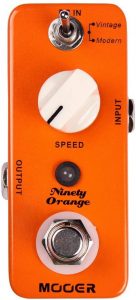
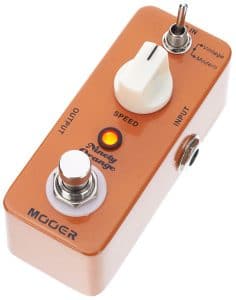
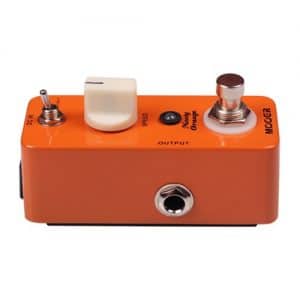
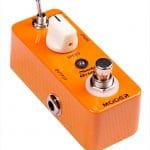
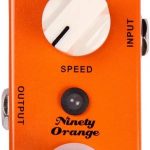
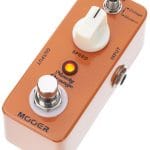
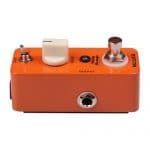
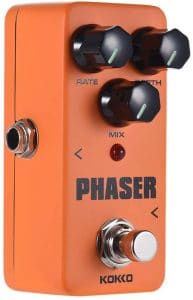
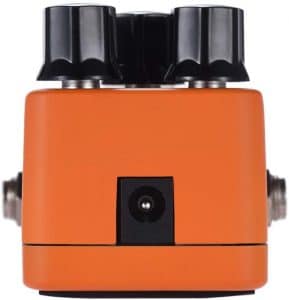
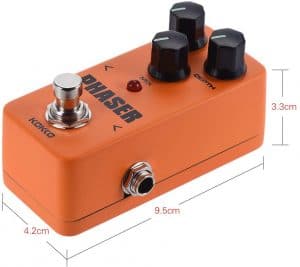
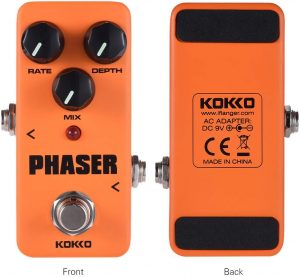
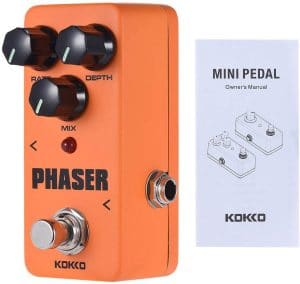
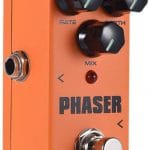

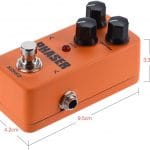
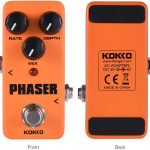
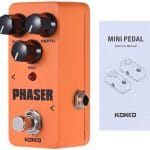
 Rate/Speed – For some, this is the only control they need, and the only one you’ll find on every model. It makes the sweep faster or slower and is by far the most important control.
Rate/Speed – For some, this is the only control they need, and the only one you’ll find on every model. It makes the sweep faster or slower and is by far the most important control. All of these pedals have an input and output that you obviously need, but other pedals are going to be able to offer you a little bit more functionality.
All of these pedals have an input and output that you obviously need, but other pedals are going to be able to offer you a little bit more functionality.




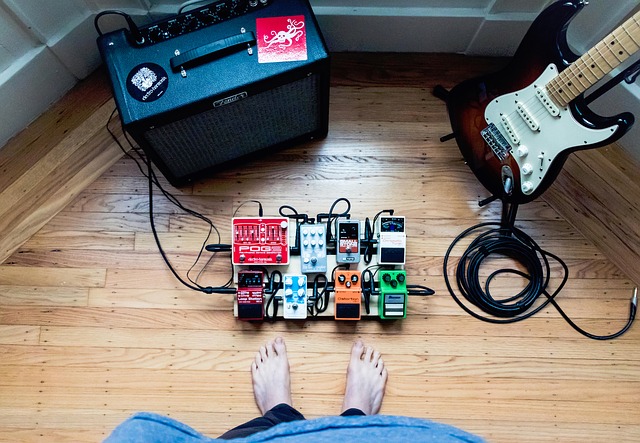
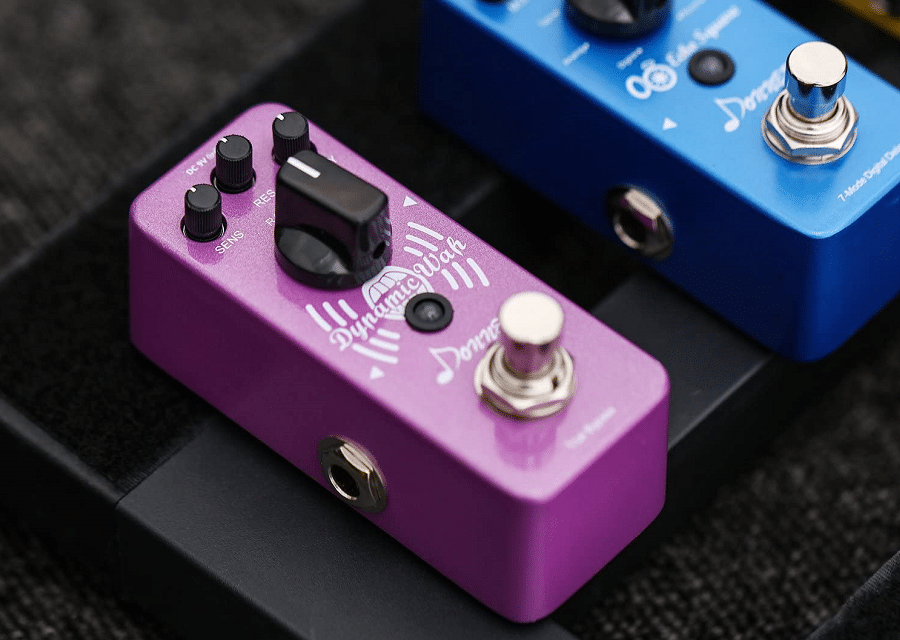




Adding an analog clearboost pedal, tooo any of the phaser stompbox’s u mentioned that might (were said tooo) be lacking in sound quality, solves that, if it’s to be problem for ya. Totally recommend is the cheaper the dirt Caline CP-22 ‘PurpleSmoke’ clearboost. This thing’s a diamond in the ruff swiss army knife of the stompbox world, makes ultra expensive pedals that are 10 time’s the cost of IT sonically better…& not only that I’ve used it along with a mini-mixer as kinda like an analog frontend for a cheapo podcast box tooo make surprisingly good damn near pro-quality production recordings on a small laptop computer¡! When dialed in correctly with only the two knobs(unlabeled)it has. The unit really shines, like a channel strip or something; unbelievably impressive, more people need tooo know & be aware of this rectangle super piece of kit excuse my verbosity thanx dude(s)